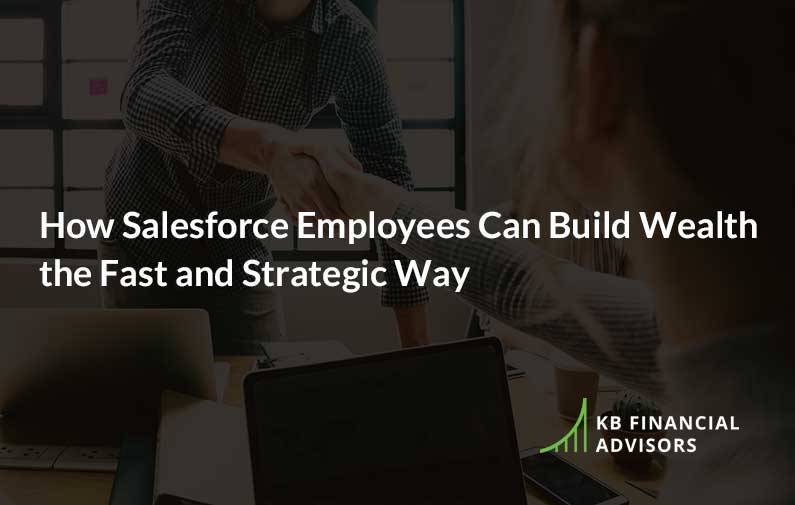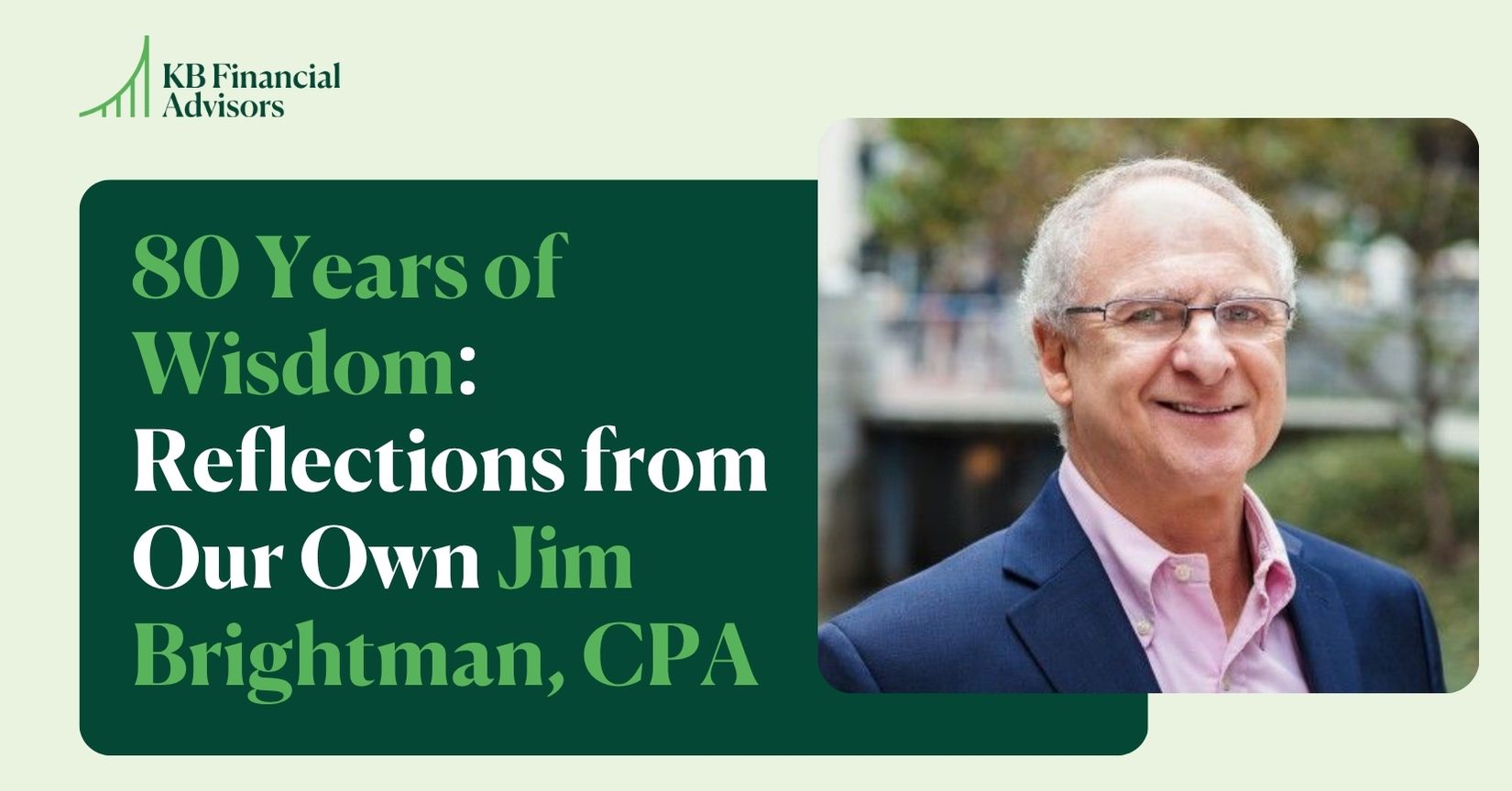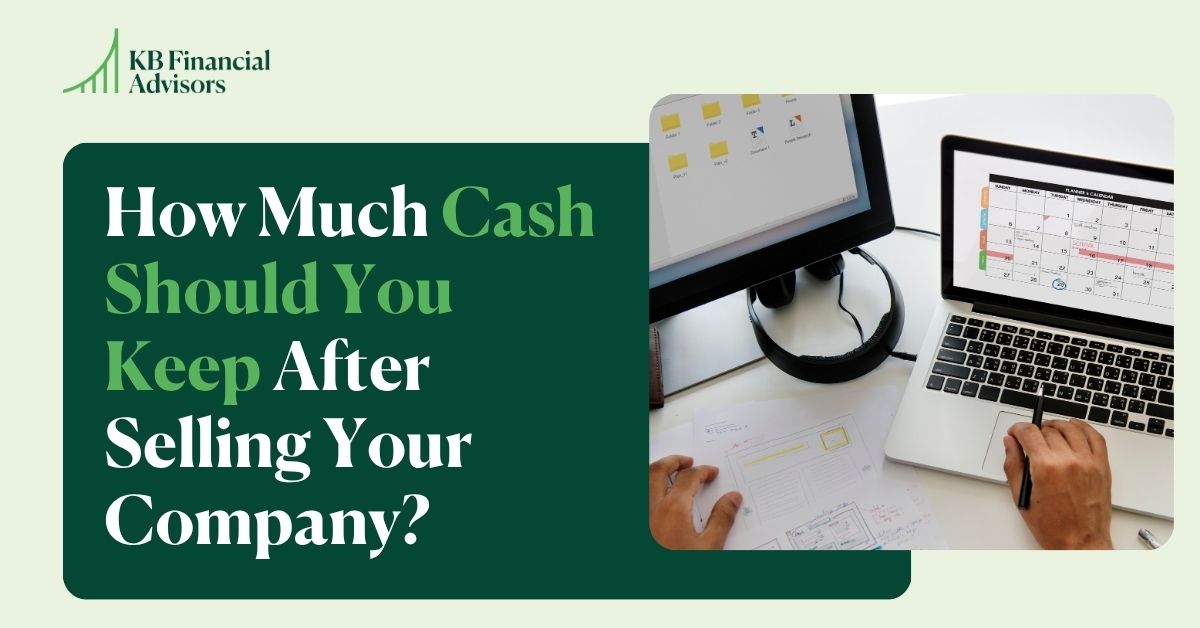The biggest draw of working for Salesforce or another big-name tech company, is that employees build wealth in those companies fast… almost regardless of what their job title is. And you want to know how they do it. Because… why wouldn’t you want to add more wealth to your bank accounts automatically?
We’ve been advising Salesforce employees on building wealth for over 10 years. We take their unique benefits offers and stock options and formulate specific strategies to make as much wealth happen as possible.
But we know that more than just local Salesforce tech employees can benefit from this kind of information — which is why we’re revealing some of those strategies for you here.
If you work at Salesforce or a similar SaaS company, dive in and take home some tips that can help you better leverage your compensation to add some zeros onto your net worth.
Three Types of Employees, Three Types of Tech Companies – Which one are you?
When it comes to helping employees build wealth, there are rarely “right” answers that apply in every situation. Each person we work with comes in with a complex set of needs, wants, challenges, and opportunities, which makes every plan slightly different.
But there are some general guidelines you can use to create your own strategy to build wealth should you want to get started on your own.
We use different financial planning strategies for different types of employees and companies. In terms of employees, there are three main types that we classify for wealth-building purposes:
- “Early” employee, or one of the first 50 at the company
- Late-stage employee, or someone who was hired somewhere between 50 and 1,000 employees
- Fast-track employee, on a course for growth and opportunity
Each employee type should take a different approach to leveraging their compensation for more wealth. In addition, what kind of tech company you’re at matters, too. We consider three types of structure:

- The startup
- Pre-IPO
- Publicly-traded company
Salesforce employees, for example, are at a large, publicly-traded company that went through its IPO in 2004. That means that if you’re a Salesforce employee today, you fall into the 3rd category both in terms of what kind of employee you are and what kind of company you work at.
Why does this all matter?
Because you work at a publicly-traded company, as a Salesforce employee you can expect a higher salary than at a startup or a company that hasn’t yet gone through an IPO. Along with a higher salary, you’re likely to enjoy better benefits.
The tradeoff? There’s little upside in RSUs or stock options at this point. You’re unlikely to grow wealth through explosive growth in the value of the company — that explosion happened over a decade ago.
Defining Your Goals When You Work at a Publicly-Traded Tech Company
As a Salesforce employee today, your goal won’t be to strategically use stock options. You’ll want to focus on maximizing the great benefits that you have to achieve your goals instead.
Those goals could include things like achieving financial freedom, or the freedom from having to work and earn a certain amount on your regular paycheck.
Achieving this kind of goal gives you complete autonomy over your time, and frees you to focus on other important things you want in your life. Financial freedom could give you the ability to spend more time with your family, travel extensively, or even focus on your own startup idea.
Building wealth is another, similar goal you could have that you can achieve if you know how to strategically leverage your salary and benefits from your position at Salesforce.
And ultimately, smart use of your compensation increases your overall levels of confidence around your financial situation — which, said another way, provides you freedom from fear.
Here’s how to do it.
Negotiating a Job Offer is the #1 Way Employees Build Wealth at a Publicly-Traded Company Like Salesforce
The best time to leverage your compensation? Before it’s been set. If you’re going into an interview or looking at a new position at Salesforce, know what to expect to put yourself in a stronger position to negotiate a better package.
You should expect the company to have a well-defined salary range for your position — but that range could be much broader than you expect.
For example, the bottom tier salary for your offer might be $140,000. The top could be up to $180,000. Or the bottom might be $200,000, and the top could reach $280,000.
The point? Don’t be afraid to ask for more in your negotiations.
And remember that companies like Salesforce are often more flexible with restricted stock units (or RSUs) than with specific salary numbers. If you hit a wall in asking for more salary, countering by asking for more RSU can be a great way to go.
Leverage Your Salesforce Employee Benefits to Your Advantage
You should also keep in mind that your salary is only one part of your compensation. Your great Salesforce employee benefits can play a huge role in making it easier to grow wealth.
Specifically, you’ll want to plan to take advantage of these benefits:
- A health savings account, (HSA)
- Your 401(k)
- An employee stock purchase plan (ESPP)
- Restricted stock units
Let’s take a look at each.
A Health Savings Account: Tax-Free Contributions, Earnings, & Withdrawals
Salesforce will help fund your HSA as part of your employee benefits at the company.
HSAs are a massively tax-advantaged accounts that can help you manage healthcare costs. Contributions are tax-free, earnings are tax-free, and withdrawals are tax-free (assuming you only use this money for qualified health expenses; otherwise you lose tax advantages).
Ideally, you’ll pay for all your healthcare expenses during your working years from your cash flow while contributing to your HSA (and investing those funds appropriately within the account). Then, you can give your contributions decades to earn returns and build wealth, just like other retirement plans.
Finally, when you actually retire, you can look at your HSA as a healthcare-specific nest egg to help you fund what is likely going to be your biggest cost as you age.
Assuming your income puts you in the top tax bracket of 37% income tax and you file as single, you max HSA contribution is $3,450 per year which gives you a tax savings of $1,277. Your actual, after-tax contribution is only $2,173.
If you file jointly, your maximum contribution each year caps out at $6,900 and you can enjoy a tax savings of $2,553. That makes your actual after-tax cost of contribution $4,347. In the top tax bracket of 37%, this is a great deal — and it can get better.
Remember, you have the ability to invest your HSA dollars. That means you get the immediate tax deduction, plus the ability to receive tax-free investment growth because Salesforce offers great investment options including low-cost options from Vanguard.
Keep in mind HSAs work best when you have limited, ongoing medical needs. If you have regular, recurring medical expenses, you’ll need to do an in-depth analysis of the costs versus benefits to determine if the HSA will work for you.
Your 401(k): A Major Way Employees Build Wealth
Salesforce offers a 401(k) plan through Fidelity. As a Salesforce employee, you get two contribution options:
- Pre-tax
- Roth
We almost always recommend pre-tax to get the deduction now. You can always do a Roth conversion later.
The power of the pre-tax 401(k) is similar to your HSA. You get the immediate tax savings. With a max contribution of $18,500, that tax savings can be as high as $6,845 (higher still if you consider state and local income taxes).
Then all investment earnings on those dollars grow tax deferred. Plus, you have a great deal of choice in determining when you take future withdrawals and pay taxes.
A 401(k) for most employees is the single best way to build wealth.
Buy Stock for Cheap: An Employee Stock Purchase Plan (ESPP)
Salesforce’s ESPP is our favorite benefit for Salesforce employees. We love it because an ESPP is a great thing to leverage no matter what company you work for, but Salesforce has built their ESPP to make sure you pay the lowest possible price for your employee stock.
Here’s what you need to know:
- You can enroll in your ESPP in May or November.
- You can contribute anywhere from 2% up to 15% of your income (max $21,250 per year) to the plan.
- You receive at least a 15% discount on the current stock price
Your ESPP can help you build serious wealth with very little downside. We recommend that as a Salesforce employee you contribute the maximum allowable amount — then sell ASAP. Your goal should be to turn the discount you receive into a small cash bonus.
For example, say you contribute the max of $21,250 (or $10,625 per offering period). Your $21,250 will purchase shares worth at least $25,000 thanks to the discount. You can then sell those shares immediately to net a bonus of $3,750.
Better still is to take those proceeds and invest them.
Sell Restricted Stock Units ASAP for A Profit
If you have RSUs as part of your compensation package at Salesforce, they’ll be administered through Etrade. The default tax election for most employees will be “sell to cover.”
Sell to cover is where a portion of your RSU are sold at vest to cover taxes. You should also plan to sell your RSUs as soon as possible after they vest.
See our Definitive Guide to RSU for more.
Supercharge Your Employee Benefits to Build Wealth
To make the most of all this information, here’s a quick action plan to follow. You’ll want to prioritize your Salesforce employee benefits in the following order:
- Max out your pre-tax contributions to your 401(k).
- Then max out your HSA. (We recommend focusing on 401(k) and HSA first because your federal tax bracket will be higher than the 15% discount you earn on your ESPP. In other words, the tax benefits of the 401(k) and HSA outweigh the discount offered by the ESPP.)
- Max out what you can contribute to your ESPP — then sell those shares ASAP.
- Sell RSU shares as they vest.
Following this process will, at minimum, allow you to save and invest $50,400. For most employees building wealth, this number will likely be much more thanks to the fact that each RSU grant varies in value, and the value at sell varies based on the performance of Salesforce.
And if you don’t want to sell your ESPP and/or RSUs?
Sure, you could invest in your company instead. But we recommend holding no more than 10 to 15 percent of Salesforce shares in your portfolio (to protect against the risk of overexposure).
But when it comes to RSUs — sell them all anyway. If you must invest in Salesforce, your ESPP is the appropriate place to do so. Even there, you need to be strategic.
Keep your ESPP shares until you meet your target percentage of 10 to 15 percent in your portfolio — then sell or keep all future ESPP shares. Come the next enrollment period, if Salesforce shares make up 15% of your portfolio, sell the new shares. If it’s less, you can buy and hold.
Again, following these strategies will allow you to build far more wealth than leveraging your salary alone — so be sure to take advantage of your great Salesforce employee benefits. It’s a simple way to maximize your net worth and help you achieve your most important goals.



